While we were on a Mediterranean cruise on the Cunard Queen Elizabeth we stopped in Lisbon, Portugal. It was a short day excursion but while we were there, we tasted one of Portugal’s specialty desserts called Pastéis de Nata, which are custard tarts. My life was forever changed.
Find a local guide in Lisbon, here.
I’m not a huge dessert eater but I could eat these tarts all day long. It inspired me to create my own humble version of the recipe.
Enjoy this recipe!
This is not the “official” secret recipe of the monks, but I did some research so it’s fairly close and not terribly hard to make.
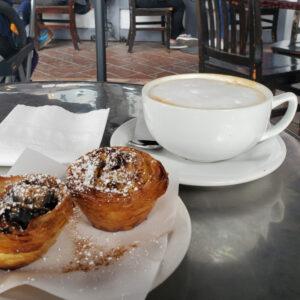
Pastéis de Nata Portuguese Custard Tarts
Ingredients
- 1 Package of frozen pie crust filo dough or puff pastry thawed. Puff pastry or filo dough is more authentic but if you can't find it, frozen pie crust works fine as pictured here
- 1 cup heavy whipping cream
- 1/4 cup milk
- grated peel of 1 lemon
- 1 cup sugar
- 1 tsp cornstarch
- 6 egg yolks whisked slightly
- 1 Tbsp powdered sugar
- 1 tsp cinnamon
- butter to line muffin tins and to use to layer filo dough.
Instructions
- Preheat the oven to 500 degrees
- Grease a muffin pan with butter (to make 8 tarts)
- Unfold pie crust or puff pastry and cut out 8 four-inch rounds (you may have to roll the crust a couple of times to get 8.
- Insert each pie crust round into a muffin tin to create a cup for the custard, pressing in each tin from the center to the brim. If you use filo dough, simply line the muffin tins with it Layering each layer with butter.
- Mix the cream and milk in a large saucepan
- Add the grated lemon peel
- Whisk the egg yolks
- Blend in the cornstarch
- Blend in the sugar.
- Heat on a low heat until the mixture comes to a boil.
- Take the mixture off the heat.
- Pour the mixture into 8 muffin tins
- Place the muffin pan in the oven and bake for 15 minutes or until the pastry and cream is lightly browned.
- When the pastries are done let them cool.
- Mix together the powdered sugar and cinnamon
- Using a sifter, lightly sprinkle the tarts with the sugar and cinnamon mixture
- Serve the tarts lukewarm
A visit to Lisbon, Portugal
Lisbon is absolutely magical. We were only there for a few hours but what we saw made us never want to leave.
Belém
Our tour guide took us to Belem outside of Lisbon to visit the Jeronimos Monastery and suggested that we take time to meander to the bakery with the blue awning down the street, to taste their specialty custard tarts.
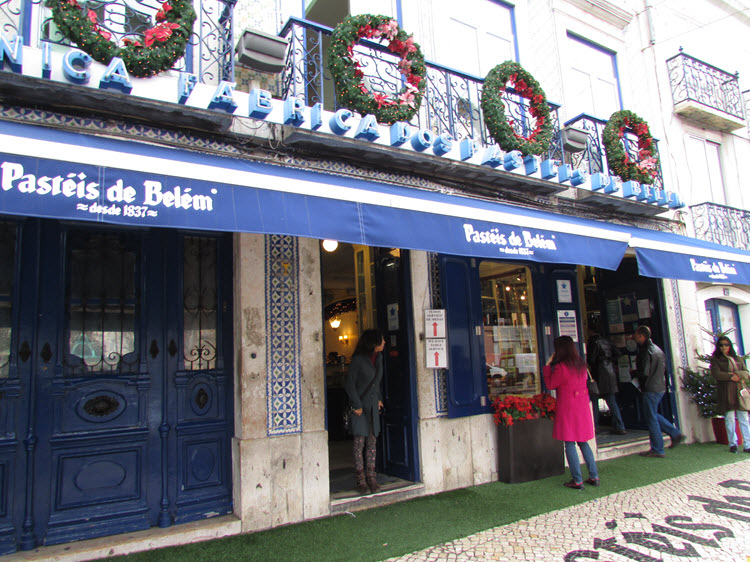
We dutifully obeyed and were glad we did. The old bakery, called Pastéis de Belem, has been in operation since 1837.
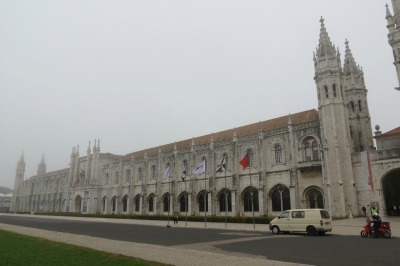
A short history of Pastéis de Nata
There are several “secret” recipes for Pastéis de Nata in Portugal. Almost every bakery there competes to outdo each other with its own unique version.
During the revolution of 1820, many of Portugal’s religious orders were dismantled. The monks at the Jeronimos Monastery in Belém began to sell pastries to survive. That’s where Pastéis de Nata custard tarts originated. The monastery closed in 1834 and the building was later revamped as a school and orphanage.
The monks sold the recipe to Rafael Domingos Alves, a Portuguese businessman who had recently returned from Brazil. He opened the bakery in 1837 and Pastéis de Nata has been served there ever since. The monk’s “secret” recipe has been handed down to generations of the Alves descendants and is prepared in a secret workroom at the bakery.
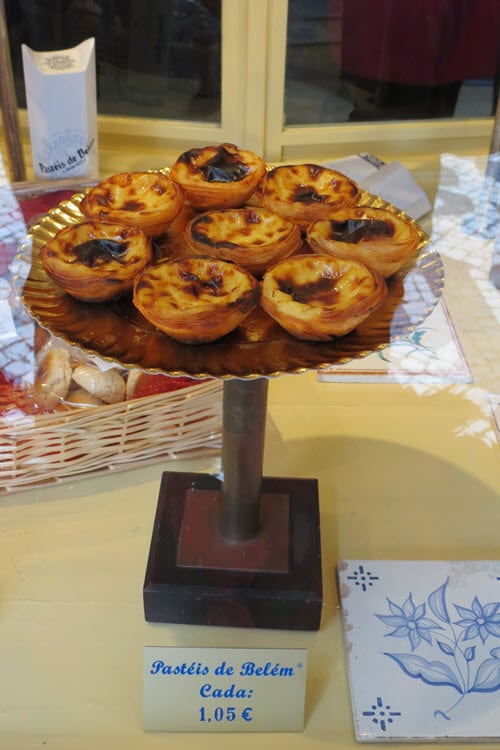
I used frozen pie crust cut in rounds as the cup for the custard because I couldn’t find puff pastry, which is more authentic. You can always make your own crust if you’re a “baking aficionado,” but I’m not and I wanted to keep it simple.
The beauty and romance of Lisbon, Portugal
Lisbon is an eclectic and intriguing city. I wish we had more time to explore, but our cruise ship only docked there for part of the day. In the central downtown section of Lisbon, the buildings are piled up on steep hills. Lisbon or Lisboa, as it’s called in Portugal, is called the City of the Seven Hills. It’s a fabulous aerobic workout if you have time to walk up and down the tiered streets.
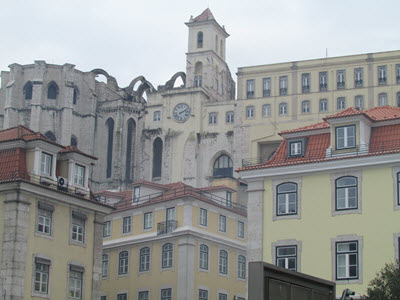
The residents of the old city maneuver the hilly landscape by climbing flights of stairs or by taking elevators.
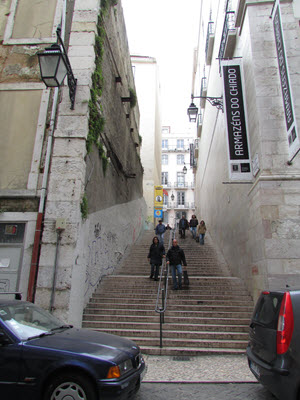
The city is also known for its charming trolleys.
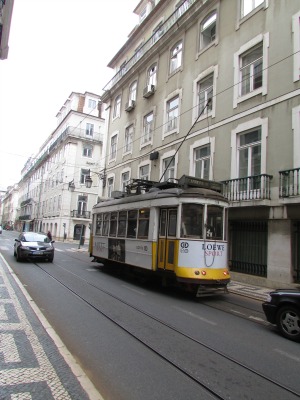
If you’re in fairly good shape you may enjoy a group hike to explore the city’s vast lookout points.
Lisbon is the oldest city in Western Europe. It predates London, Paris, and Rome by several centuries. The city was almost completely destroyed when an 8.5 – 9.0 earthquake hit and a massive tsunami swept through it in 1755.
The downtown area, called Baixa is a shopper’s paradise filled with smart boutiques and outdoor cafes. I picked up a silky blouse while I was there.
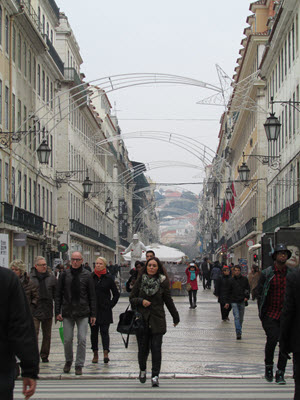
We stopped at a cafe off the Rua Augusta and had a little snack. Okay, it wasn’t that little but it was sure tasty!
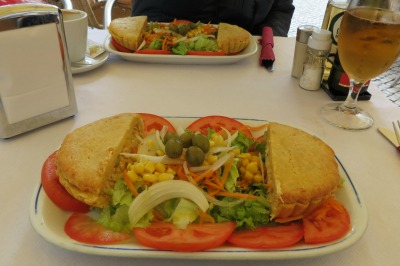
I purchased a can of Portugal’s famous sardines and a cookbook that inspired the recipe below.
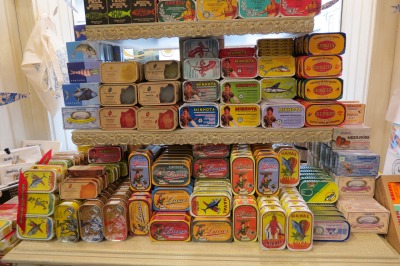
I hope you enjoy this deliriously delicious Pastéis de Nata recipe with a hot cup of coffee or tea and dream of visiting Portugal.
Find more things to do in Lisbon here.
What would you like to visit in Portugal? Please leave a comment and tell us.



I learned to make these on my own Viking cruise to Portugal!
Our AmaWaterways Cruise taught us Struedal. LOL
Yummy! I love trying local specialties wherever I travel. Portugal is on my bucket list.